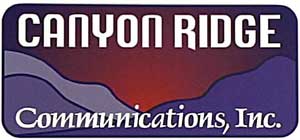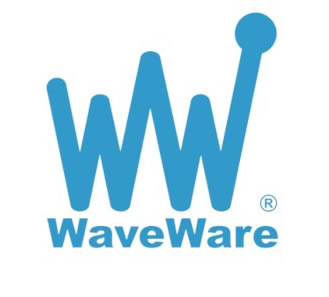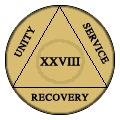Selected portions of the BloostonLaw Telecom Update, and/or the BloostonLaw Private Users Update — newsletters from the Law Offices of Blooston, Mordkofsky, Dickens, Duffy & Prendergast, LLP — are reproduced in this section with the firm’s permission.
| BloostonLaw Telecom Update |
Vol. 18, No. 24 |
June 10, 2015 |
REMINDER: Net Neutrality Rules Go Into Effect on Friday (today)
As previously reported, the FCC published its March 12 Open Internet Order in the Federal Register on April 13, establishing an effective date of June 12 for those rules, except for certain enhancements made to the transparency rules, which are collections of information requiring separate OMB approval. Rules going into effect include: the “bright line” prohibitions on blocking and throttling; the prohibition against unreasonable interference of edge-provider content; and those sections of the Communications Act which the FCC did not forbear from applying to broadband internet access service.
Headlines
Chairman Wheeler Responds to Senate Letter on Modernizing RLEC Support
On May 29, FCC Chairman Tom Wheeler responded to the letter from Sen. John Thune (R-S.D.) and 60 other Senators calling on the FCC to modernize USF to better support rural broadband services. In his response, Chairman Wheeler assured the Senators that he shared their goal of ensuring that the USF program “better reflects today’s marketplace and technology in areas served by rate-of-return carriers.”
To that end, Chairman Wheeler cited to his direction to the Wireline Competition Bureau to meet with stakeholders in the rate-of-return community to develop an approach that “has the widespread support of the rate-of-return community and meets the principles unanimously outlined by the Commission in [its] April 2014 Further Notice of Proposed Rulemaking.” However, the Chairman continued, a consensus had not yet been reached during the initially assigned April 16 to May 18 period (subsequently extended to June 3) and stakeholders had not yet presented the FCC with a solution that “creates the right incentives to deploy modern networks throughout rural America, meets the Commission’s overarching policy objectives, and has the widespread support of the rate-of-return carrier community.” A copy of the letter is available here.
In its most recent ex parte filing (dated June 3), the rate-of-return stakeholder group indicated that it had reached consensus with regard to a substantial portion of rate-of-return USF issues, including a basic two-path framework which would allow a choice between model-based support and rate-of-return mechanisms that will support not only traditional voice lines but also data only lines.. A copy of the filing is available here.
FCC Adopts Improved Emergency Alert System Operating Standards
To facilitate the use and effectiveness of the Emergency Alert System (EAS), the FCC has recently adopted a Sixth Report and Order (FCC 15-60) with improved operational standards for the public warning and alert system. These operational standards are informed by lessons learned in a nationwide EAS test that was held by the FCC on November 9, 2011.
By way of background, the EAS is a nationwide emergency warning system that is a successor to the Emergency Broadcast System and is designed to evolve as legacy networks and services transition to next generation technologies. The Commission’s EAS Rules apply to analog radio and television stations, and wired and wireless cable television systems, DBS, DTV, SDARS, digital cable and DAB, and wireline video systems, which entities are deemed “EAS Participants.”
The Sixth Report and Order strengthens the EAS by establishing specific operational standards for use during future tests and actual emergencies. These standards include:
- The Commission has established “six zeros” (000000) as the national location code pertaining to every state and county in the United States. EAS Participants are required to use equipment that is capable of processing this location code;
- EAS Participants’ equipment must be capable of processing a National Periodic Test (NPT) event code for future nationwide EAS tests to ensure consistency in the operation of EAS equipment in future national, regional, state and local activations;
- EAS Participants are required to file test data in an Electronic Test Report System (ETRS) that the FCC has developed for recording EAS dissemination data and developing an FCC Mapbook that can illustrate the manner in which an EAS alert has propagated throughout part or all of the United States;
- EAS Participants are required to comply with minimum accessibility rules in order to ensure that EAS visual messages are readable and accessible to all members of the public, including people with disabilities.
EAS Participants will be required to comply with these rules within twelve months of their effective date, or as noted in the Sixth Report and Order. The effective date of the rules is thirty (30) days following publication in the Federal Register. Our clients that operate wired and wireless CATV systems and other wireline video systems such as IPTV should confirm with their equipment manufacturers that their systems will be capable of meeting the FCC’s revised standards within the next year.
FCC Identifies Eligible Broadcast Facilities; Sets Deadline for Technical Certification
The FCC Media Bureau has published a list of all full power and Class A television station facilities that are eligible for protection in the broadcast spectrum “repacking” process and for relinquishing spectrum in the upcoming broadcast incentive auction. All licensees with Stations identified in the Appendix must file an FCC Form 2100, Schedule 381 (“Pre-Auction Technical Certification Form” or “Form”) to certify to the accuracy of the authorization and underlying Database Technical Information for each eligible facility by July 9, 2015.
Issuance of the Media Bureau’s Public Notice (DA 15-679) and 45-page Appendix is an important step toward the broadcast incentive auction, tentatively planned for the late Spring or Summer of 2016, because it identifies those broadcasters eligible for protection in the repacking process and participation in the reverse auction.
While the Appendix is intended to represent a complete list of all Class A and full power station facilities eligible for protection in the repacking process and relinquishment in the reverse auction, licensees who believe that the Appendix omits an eligible facility are directed to file with the Commission a “Petition for Eligible Entity Status” by July 9, 2015. The petitioner must explain the reason it believes the facility is eligible, consistent with the Incentive Auction order (e.g., the facility was subject to mandatory or discretionary protection). The Bureau intends to process petitions in an expeditious manner and inform the petitioner of its decision well in advance of the reverse auction.
The Pre-Auction Technical Certification Form includes two questions. The first question requires licensees to certify that they have reviewed the authorization for each eligible facility listed in the Appendix and to indicate whether the underlying Database Technical Information for their eligible facility is correct. A licensee must make one of the following certifications:
- the authorization for the eligible facility and all underlying Database Technical Information is accurate and complete, to the best of the licensee’s knowledge;
- the authorization for the eligible facility is inaccurate because of a discrepancy between the authorization and the underlying Database Technical Information on file with the Commission; or
- the eligible facility has been operating with parameters at variance from those specified in its authorization and the Database Technical Information.
The second question requires licensees to provide additional information concerning their eligible facility, including information regarding the eligible facility’s transmitter, antenna, and antenna support structure. The Commission will use this information to help facilitate the repacking process.
In the Incentive Auction order, the Commission directed the Office of Engineering and Technology (OET) to release a detailed summary of baseline coverage area and population served by each television station to be protected in the repacking process. The final baseline released by OET will contain the final list of eligible stations based on corrections to eligible facilities resulting from their certification in the Pre-Auction Technical Certification Form and any granted Petitions for Eligible Entity Status or Petitions for Reconsideration of the Incentive Auction order.
FCC and House Energy and Commerce Committee Reach Deal on Field Office Closings
On June 9, leaders of the House Energy and Commerce Committee today announced an agreement with FCC Chairman Tom Wheeler to amend the FCC’s plans to close FCC field offices. According to Chairman Wheeler, “This updated plan represents the best of both worlds: rigorous management analysis combined with extensive stakeholder and Congressional input.” The plan is currently being circulated among the FCC commissioners prior to vote.
Originally, Chairman Wheeler’s proposal would reportedly have closed 16 of the FCC’s 24 field offices — a course of action which met heavy resistance in Congress, culminating in the announcement by the House Subcommittee on Communications and Technology, chaired by Rep. Greg Walden (R-OR), of a hearing entitled “Oversight of FCC Field Offices,” in which members were to review that proposal.
“The FCC’s field offices serve a vital role — they are on the front lines enforcing the commission’s rules protecting public safety communications from interference and acting as the local face of an otherwise centralized Washington bureaucracy. We remain skeptical of the chairman’s pursuit to close these offices and question whether the economic benefits outweigh the public safety value of the field agents,” said Walden in announcing the hearing.
The revised plan will reportedly keep 15 of the FCC’s 24 field offices open, ensure better rapid response capabilities for the west, provide a mechanism for escalating interference complaints, improve enforcement of the FCC’s rules against pirate radio operators, and prevent the commission from transferring field office jobs to the FCC’s Washington, D.C. headquarters.
As a result of the accord, the Subcommittee canceled the Oversight of FCC Field Offices hearing.
Of the revised plan, Walden said: “We found a good solution that makes sense. These changes will keep field offices open in strategic locations and help ensure that the commission can fulfill its responsibilities to the public and public safety communities. This agreement strikes a balance between the important work of FCC field agents and streamlining field operations to ensure the efficient use of taxpayer dollars.”
FCC Adopts Report and Order Presuming Effective Competition for Cable Operators
On June 3, the FCC released a Report and Order adopting a rebuttable presumption that cable operators are subject to “Effective Competition” and “Competing Provider Effective Competition,” two industry terms of art that are defined by the Communications Act. Under the Cable Protection and Competition Act of 1992, franchising authorities may regulate basic cable service tier rates and equipment if the FCC finds that a cable system is not subject to Effective Competition. As a result of the adoption of a rebuttable presumption of Effective Competition, cable franchising authorities will be prohibited from regulating basic cable rates unless said franchise is able to successfully demonstrates that the cable system is not subject to Competing Provider Effective Competition.
According to the Report and Order, this change is justified by the fact that “Direct Broadcast Satellite (“DBS”) service is ubiquitous today and that DBS providers have captured almost 34 percent of multichannel video programming distributor (“MVPD”) subscribers.” The rebuttable presumption also satisfies the FCC’s obligation under section 111 of the STELA Reauthorization Act to adopt a streamlined Effective Competition process for small cable operators.
Commissioners Clyburn and Rosenworcel dissented in part from the Report and Order, criticizing the FCC for overshooting the directive of section 111 of the STELAR Act by, in Commissioner Clyburn’s words, “flip[ping] the presumption for all cable providers” instead of “tailoring the relief to reduce the burden on smaller providers as Congress directed us to do.” Said Commissioner Rosenworcel, “the Commission inexplicably races past this straightforward statutory directive and instead provides all cable operators—from the biggest to the smallest—with an expedited process to avoid oversight.”
Law & Regulation
Numbering Plan Administration Fund Size and Contribution Factor Announced
The Wireline Competition Bureau (WCB) has announced the proposed North American Numbering Plan (NANP) Administration fund size estimate and contribution factor for the fiscal year July 1, 2015 through September 30, 2016 (Fiscal Year 2015), filed by the NANP billing and collection agent, Welch LLP (Welch). (CC Docket No. 92-237). According to the WCB, in its May 4, 2015 filing, Welch proposed a funding requirement of $8,175,707 for Fiscal Year 2015, and a contribution factor of 0.0000387 for recovering the cost of NANP Administration for Fiscal Year 2015. The funding requirement contemplates a Canadian contribution of $133,943, a Caribbean contribution of $27,943, a U.S. contribution of $6,653,548, and the application of $1,360,273 from the accumulated surplus from the prior fiscal year. The funding requirement also contemplates a contingency fund of $500,000. If the Commission takes no action regarding the proposed fund size estimate and contribution factor within the 14-day period following the June 8, 2015 release of its Public Notice announcing the proposal, the fund size estimate and the contribution factor are considered approved by the Commission and become effective for Fiscal Year 2015.
2014 Annual International Traffic and Revenue Data Must be Filed Via New Online System
On June 5, the FCC’s International Bureau issued a Public Notice announcing that the annual traffic and revenue reports which international service providers must file pursuant to section 43.62 by July 1 of each year will be filed using a new online interface that, as of today, is not yet ready to accept said reports.
The Public Notice indicates that a separate announcement will be made for the filing window of the new system. If an international service provider files its annual international traffic and revenue report before the date of the filing window, the data will be deleted when the filing window opens.
Industry
Verizon Employees Allege Verizon Abandoning Copper Lines
Yesterday, multiple news sources reported that Verizon Communications Inc.’s largest union, the Communications Workers of America (CWA), is saying that the company is refusing to fix broken landlines, effectively abandoning them, in some areas of the Northeast.
According to The Wall Street Journal, the CWA plans to file public information requests this week in New York, New Jersey and Pennsylvania to see whether it can uncover data showing the extent of the problems.
“Verizon is systematically abandoning the legacy network and as a consequence the quality of service for millions of phone customers has plummeted,” said Bob Master, CWA’s political director for the union’s northeastern region. Verizon’s Rich Young, perhaps unsurprisingly, called the union’s claims “pure nonsense.”
Deadlines
JULY 1: FCC FORM 481 (CARRIER ANNUAL REPORTING DATA COLLECTION FORM). All eligible telecommunications carriers (ETCs) must report the information required by Section 54.313, which includes outage, unfulfilled service request, and complaint data, broken out separately for voice and broadband services, information on the ETC’s holding company, operating companies, ETC affiliates and any branding in response to section 54.313(a)(8); its CAF-ICC certification, if applicable; its financial information, if a privately held rate-of-return carrier; and its satellite backhaul certification, if applicable. Form 481 must not only be filed with USAC, but also with the FCC and the relevant state commission and tribal authority, as appropriate. Although USAC treats the filing as confidential, filers must seek confidential treatment separately with the FCC and the relevant state commission and tribal authority if confidential treatment is desired.
JULY 1: MOBILITY FUND PHASE I ANNUAL REPORT. Winning bidders in Auction 901 that are authorized to receive Mobility Fund Phase I support are required to submit to the Commission an annual report each year on July 1 for the five years following authorization. Each annual report must be submitted to the Office of the Secretary of the Commission, clearly referencing WT Docket No. 10-208; the Universal Service Administrator; and the relevant state commissions, relevant authority in a U.S. Territory, or Tribal governments, as appropriate. The information and certifications required to be included in the annual report are described in Section 54.1009 of the Commission’s rules.
JULY 31: FCC FORM 507, UNIVERSAL SERVICE QUARTERLY LINE COUNT UPDATE. Line count updates are required to recalculate a carrier's per line universal service support, and is filed with the Universal Service Administrative Company (USAC). This information must be submitted on July 31 each year by all rate-of-return incumbent carriers, and on a quarterly basis if a competitive eligible telecommunications carrier (CETC) has initiated service in the rate-of-return incumbent carrier’s service area and reported line count data to USAC in the rate-of-return incumbent carrier’s service area, in order for the incumbent carrier to be eligible to receive Interstate Common Line Support (ICLS). This quarterly filing is due July 31 and covers lines served as of December 31, 2014. Incumbent carriers filing on a quarterly basis must also file on September 30 (for lines served as of March 31, 2015); December 30 (for lines served as of June 30, 2015), and March 31, 2016, for lines served as of September 30, 2015).
JULY 31: CARRIER IDENTIFICATION CODE (CIC) REPORTS. Carrier Identification Code (CIC) Reports must be filed by the last business day of July (this year, July 31). These reports are required of all carriers who have been assigned a CIC code by NANPA. Failure to file could result in an effort by NANPA to reclaim it, although according to the Guidelines this process is initiated with a letter from NANPA regarding the apparent non-use of the CIC code. The assignee can then respond with an explanation. (Guidelines Section 6.2). The CIC Reporting Requirement is included in the CIC Assignment Guidelines, produced by ATIS. According to section 1.4 of that document: At the direction of the NANPA, the access providers and the entities who are assigned CICs will be requested to provide access and usage information to the NANPA, on a semi-annual basis to ensure effective management of the CIC resource. (Holders of codes may respond to the request at their own election). Access provider and entity reports shall be submitted to NANPA no later than January 31 for the period ending December 31, and no later than July 31 for the period ending June 30. It is also referenced in the NANPA Technical Requirements Document, which states at 7.18.6: CIC holders shall provide a usage report to the NANPA per the industry CIC guidelines. . . The NAS shall be capable of accepting CIC usage reports per guideline requirements on January 31 for the period ending December 31 and no later than July 31 for the period ending June 30. These reports may also be mailed and accepted by the NANPA in paper form. Finally, according to the NANPA website, if no local exchange carrier reports access or usage for a given CIC, NANPA is obliged to reclaim it. The semi-annual utilization and access reporting mechanism is described at length in the guidelines.
AUGUST 1: FCC FORM 499-Q, TELECOMMUNICATIONS REPORTING WORKSHEET. All telecommunications common carriers that expect to contribute more than $10,000 to federal Universal Service Fund (USF) support mechanisms must file this quarterly form. The FCC has modified this form in light of its recent decision to establish interim measures for USF contribution assessments. The form contains revenue information from the prior quarter plus projections for the next quarter. Form 499-Q relates only to USF contributions. It does not relate to the cost recovery mechanisms for the Telecommunications Relay Service (TRS) Fund, the North American Numbering Plan Administration (NANPA), and the shared costs of local number portability (LNP), which are covered in the annual form (Form 499-A) that was due April 1.
AUGUST 1: FCC FORM 502, NUMBER UTILIZATION AND FORECAST REPORT: Any wireless or wireline carrier (including paging companies) that have received number blocks—including 100, 1,000, or 10,000 number blocks—from the North American Numbering Plan Administrator (NANPA), a Pooling Administrator, or from another carrier, must file Form 502 by August 1. Carriers porting numbers for the purpose of transferring an established customer’s service to another service provider must also report, but the carrier receiving numbers through porting does not. Resold services should also be treated like ported numbers, meaning the carrier transferring the resold service to another carrier is required to report those numbers but the carrier receiving such numbers should not report them. Reporting carriers file utilization and forecast reports semiannually on or before February 1 for the preceding six-month reporting period ending December 31, and on or before August 1 for the preceding six-month reporting period ending June 30.
AUGUST 29: COPYRIGHT STATEMENT OF ACCOUNTS. The Copyright Statement of Accounts form plus royalty payment for the first half of calendar year 2014 is due to be filed August 29 at the Library of Congress’ Copyright Office by cable TV service providers.
Calendar At A Glance
June
Jun. 10 – Comments are due by 5 p.m. Eastern on the Broadband Opportunity Council Notice and Request.
Jun. 16 – Tariffs filed on 15 days’ notice are due.
Jun. 22 – Comments are due on Eligible Services List for E-Rate 2016.
Jun. 23 – Petitions to Suspend or Reject Tariffs filed on 15 days’ notice are due.
Jun. 24 – Tariffs filed on 7 days’ notice are due.
Jun. 26 – Replies to Petitions to Suspend or Reject Tariffs filed on 15 days’ notice are due.
Jun. 26 – Petitions to Suspend or Reject Tariffs filed on 7 days’ notice are due by noon Eastern Time.
Jun. 29 – Replies to Petitions to Suspend or Reject Tariffs filed on 7 days’ notice due by noon Eastern Time.
Jun. 29 – Comments are due on the FCC’s Mobile Competition Report.
July
Jul. 1 – FCC Form 481 (Carrier Annual Reporting Data Collection Form) is due.
Jul. 1 – FCC Form 690 (Mobility Fund Phase I Auction Winner Annual Report) is due.
Jul. 6 – Reply comments are due on the 9-1-1 Non-Service Initialized Device NPRM.
Jul. 6 – Reply comments are due on Eligible Services List for E-Rate 2016.
Jul. 9 – Deadline to Certify Accuracy of Authorization and Database Technical Information for Full Power and Class A Stations.
Jul. 9 – Deadline for Petitions for Eligible Entity Status for Full Power and Class A Stations.
Jul. 14 – Reply comments are due on the FCC’s Mobile Competition Report.
Jul. 20 – PRA comments are due on the Open Internet Order.
Jul. 27 – Comments are due on FirstNet Draft RFP.
Jul. 31 – FCC Form 507 (Universal Service Quarterly Line Count Update) is due.
Jul. 31 – Carrier Identification Code (CIC) Report is due.
August
Aug. 1 – FCC Form 502 due (North American Numbering Plan Utilization and Forecast Report).
Aug. 1 – FCC Form 499-Q (Quarterly Telecommunications Reporting Worksheet) is due.
Aug. 29 – Copyright Statement of Accounts is due. |


















































 David George and Bill Noyes
David George and Bill Noyes



















